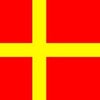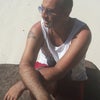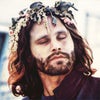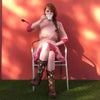The Auschwitz cross is a cross erected near the Auschwitz concentration camp. In 1979, the newly elected Polish Pope John Paul II said mass on the grounds of the Auschwitz II (Birkenau) extermination camp to some 500,000 people. An 8.6 metre (26 ft) tall cross was erected there for the purpose, and removed after the event.
Carmelite nuns opened a convent near Auschwitz I in 1984. After some Jewish groups called for the removal of the convent, representatives of the Catholic Church agreed in 1987. One year later the Carmelites erected the large cross from the 1979 mass near their site, just outside Block 11, the notorious torture prison in Auschwitz I, visible from within the camp. The Catholic Church ordered the Carmelites to move by 1989, but they remained until 1993, leaving the large cross behind.
This led to protests by Jewish groups, who said that mostly Jews were killed at Auschwitz and demanded that religious symbols be kept away from the site. Some Catholics[] have pointed out that the people killed in Auschwitz I were mainly Polish Catholics. (Furthermore, Auschwitz I is the site of the martyrdom of Catholic Saint Maximilian Kolbe). Ian Kagedan of B'nai Brith Canada called the erection of the cross, "an obvious gap in understanding."
In March 1998 the Plenipotentiary for Relations with the Jewish Diaspora, Krzysztof Śliwiński, was quoted in a French newspaper as saying that the cross would be removed, because its presence was disrespectful of the Jewish legacy at Auschwitz. By the end of March 1998, a large group of government and nongovernment leaders, including then Chief of the Prime Minister's Cabinet Wiesław Walendziak, 130 Sejm deputies, 16 senators, former President Lech Wałęsa, Cardinal Józef Glemp, and Gdańsk Archbishop Tadeusz Rokoczy, went on record as opposing the removal of the cross. The cross is clearly visible from the former camp's Block 11 and marks the site where Polish political prisoners (including Catholic priests) and later Jewish prisoners were murdered by the Nazis. The leader of the Defenders of the Pope's Cross, Kazimierz Świtoń, and Mieczysław Janosz, leader of the Association of War Victims, which leased the land on which the cross stood, distributed leaflets opposing the removal of the cross.
In August 1998, the erection of some hundreds of additional smaller crosses outside Auschwitz, despite the opposition of the country's bishops, sparked intense controversy in the Polish Catholic and international Jewish community. Government efforts to resolve the situation in the fall of 1998 through the courts by revoking the lease on the land held by the Association of War Victims was met with little success. The Government wanted the local courts to agree to appoint an administrator for the former convent site pending a legal decision on the validity of the lease revocation. In October 1998, the local court refused the request to appoint such an administrator, a decision upheld in December 1998 by an appeals court in Bielsko-Biała, which returned the lease issue to the local court. At the end of 1998, complicated legal maneuverings continued, and two separate cases were before the local court—the Government's effort to break the lease and the tenants' effort to have the government action ruled illegal.
In May 1999, the Parliament passed a Government-sponsored law to protect the sites of all the former camps in the country. The Government consulted with international Jewish groups in preparing the law, which gave the Government the power it needed to resolve the issue of the "new crosses."
In late May 1999, Świtoń announced that he had laid explosives under the site where the crosses were erected, and that he would detonate them if the Government attempted to remove him or the crosses. Police officers quickly arrested Świtoń for possessing explosives and making public threats. After Świtoń's arrest, local authorities removed the crosses to a nearby Franciscan monastery, under the supervision of the local Bishop, and sealed off the site to prevent the erection of additional crosses. The Pope's Cross is not to be removed from the site for the time being.





